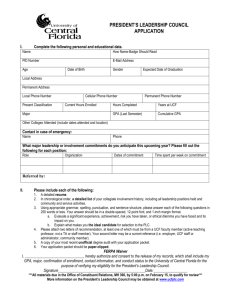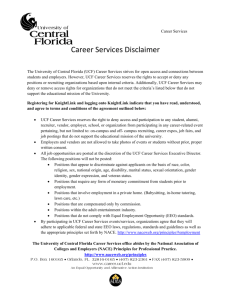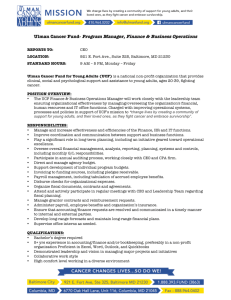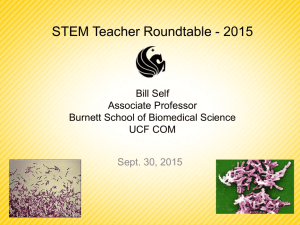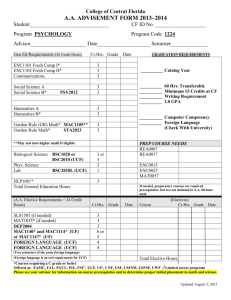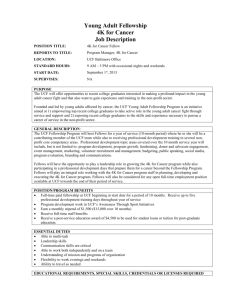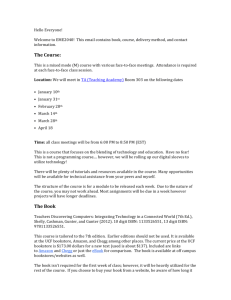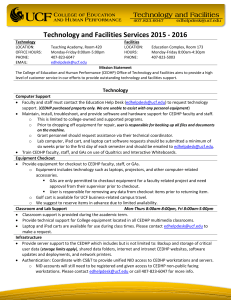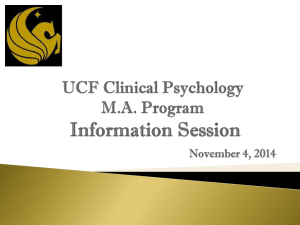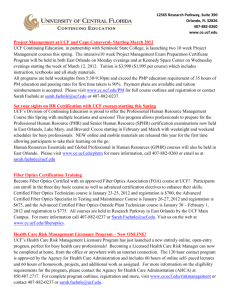UCF researchers develop breakthrough in
advertisement
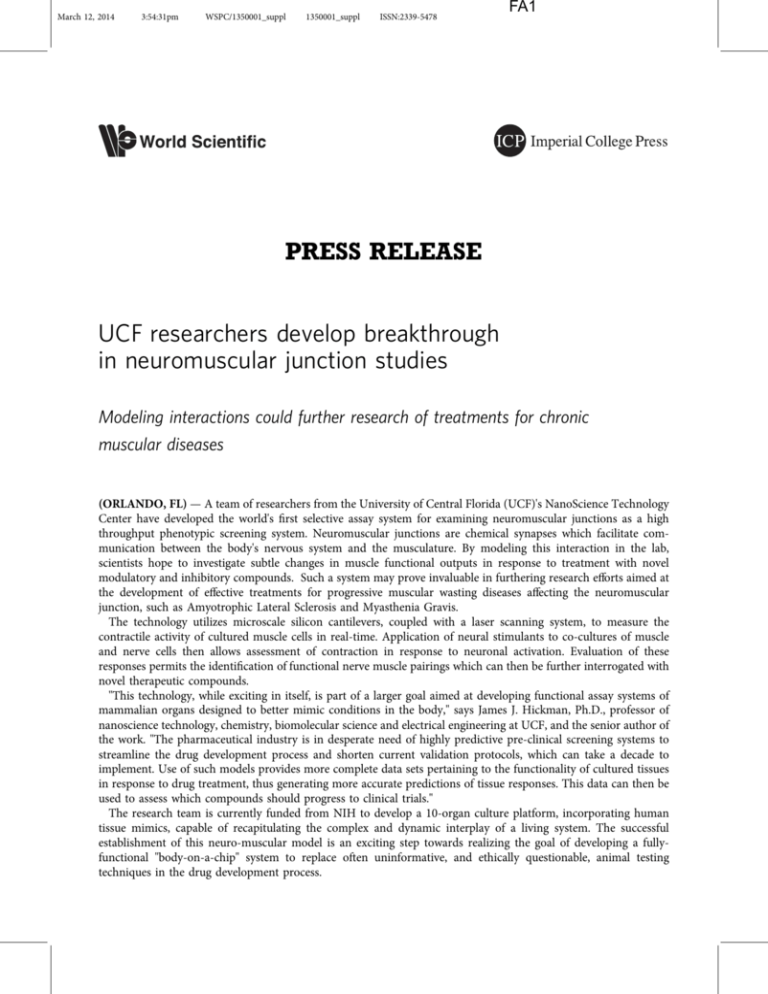
March 12, 2014 3:54:31pm WSPC/1350001_suppl 1350001_suppl ISSN:2339-5478 FA1 PRESS RELEASE UCF researchers develop breakthrough in neuromuscular junction studies Modeling interactions could further research of treatments for chronic muscular diseases (ORLANDO, FL) — A team of researchers from the University of Central Florida (UCF)'s NanoScience Technology Center have developed the world's first selective assay system for examining neuromuscular junctions as a high throughput phenotypic screening system. Neuromuscular junctions are chemical synapses which facilitate communication between the body's nervous system and the musculature. By modeling this interaction in the lab, scientists hope to investigate subtle changes in muscle functional outputs in response to treatment with novel modulatory and inhibitory compounds. Such a system may prove invaluable in furthering research efforts aimed at the development of effective treatments for progressive muscular wasting diseases affecting the neuromuscular junction, such as Amyotrophic Lateral Sclerosis and Myasthenia Gravis. The technology utilizes microscale silicon cantilevers, coupled with a laser scanning system, to measure the contractile activity of cultured muscle cells in real-time. Application of neural stimulants to co-cultures of muscle and nerve cells then allows assessment of contraction in response to neuronal activation. Evaluation of these responses permits the identification of functional nerve muscle pairings which can then be further interrogated with novel therapeutic compounds. "This technology, while exciting in itself, is part of a larger goal aimed at developing functional assay systems of mammalian organs designed to better mimic conditions in the body," says James J. Hickman, Ph.D., professor of nanoscience technology, chemistry, biomolecular science and electrical engineering at UCF, and the senior author of the work. "The pharmaceutical industry is in desperate need of highly predictive pre-clinical screening systems to streamline the drug development process and shorten current validation protocols, which can take a decade to implement. Use of such models provides more complete data sets pertaining to the functionality of cultured tissues in response to drug treatment, thus generating more accurate predictions of tissue responses. This data can then be used to assess which compounds should progress to clinical trials." The research team is currently funded from NIH to develop a 10-organ culture platform, incorporating human tissue mimics, capable of recapitulating the complex and dynamic interplay of a living system. The successful establishment of this neuro-muscular model is an exciting step towards realizing the goal of developing a fullyfunctional "body-on-a-chip" system to replace often uninformative, and ethically questionable, animal testing techniques in the drug development process. March 12, 2014 3:54:32pm WSPC/1350001_suppl 1350001_suppl ISSN:2339-5478 FA1 Additional co-authors of the Technology paper are Alec Smith, Ph.D., Chris Long, Ph.D., and Kristen Pirozzi, BS. This work was supported by National Institutes of Health grants R01NS050452 and R01EB009429. 50 Years of Achievement: The University of Central Florida, the nation's second-largest university with nearly 60,000 students, is celebrating its 50th anniversary in 2013. UCF has grown in size, quality, diversity and reputation, and today the university offers more than 200 degree programs at its main campus in Orlando and more than a dozen other locations. Known as America’s leading partnership university, UCF is an economic engine attracting and supporting industries vital to the region's success now and into the future. For more information, visit http:// today.ucf.edu. Corresponding author for this study in TECHNOLOGY is James Hickman, jhickman@mail.ucf.edu About TECHNOLOGY Fashioned as a high-impact, high-visibility, top-echelon publication, this new ground-breaking journal — TECHNOLOGY — will feature the development of cutting-edge new technologies in a broad array of emerging fields of science and engineering. The content will have an applied science and technological slant with a focus on both innovation and application to daily lives. It will cover diverse disciplines such as health and life science, energy and environment, advanced materials, technology-based manufacturing, information science and technology, and marine and transportations technologies. About World Scientific Publishing Co. World Scientific Publishing is a leading independent publisher of books and journals for the scholarly, research and professional communities. The company publishes about 500 books annually and more than 120 journals in various fields. World Scientific collaborates with prestigious organisations like the Nobel Foundation, US National Academies Press, as well as its subsidiary, the Imperial College Press, amongst others, to bring high quality academic and professional content to researchers and academics worldwide. To find out more about World Scientific, please visit www.worldscientific.com.
